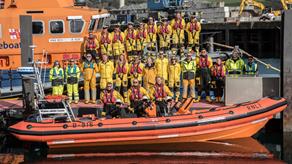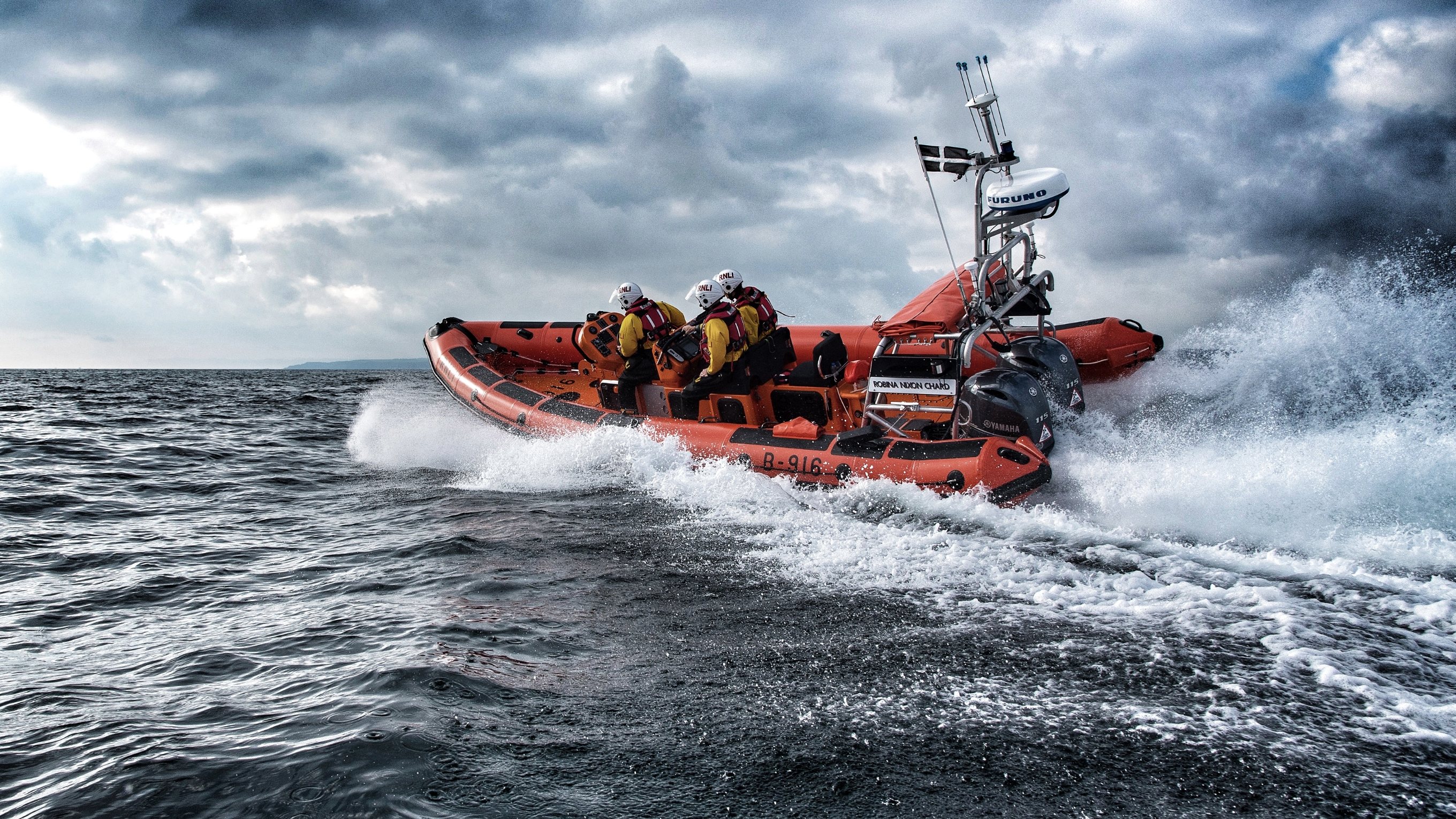

Falmouth Lifeboat Station
The current boathouse was opened in 1994 and houses the B class Atlantic 85 inshore lifeboat Robina Nixon Chard. The station is the busiest in Cornwall and also operates a Shannon class all-weather lifeboat George and Frances Phelon (temporary station lifeboat until the station's own Shannon class lifeboat has been built).
Learn more about Falmouth
Visitor information and facilities
October Half Term Station Open Days
The Lifeboat Station will be open for visits and free guided tours of our lifeboats on the following days and times during the school holiday:
- Wednesday 29 October
- Thursday 30 October
- Friday 31 October
Visit times: 10:30am - 4pm (last tour starting at 3pm)
There is no need to book, just come along to the station.
Station address
Falmouth Lifeboat Station
Tinners Walk
Port Pendennis
Falmouth
Cornwall
TR11 3XZ
Station visits
Falmouth Lifeboat Station is one of a number of stations designated as an 'Explore Station'. This means that the station is open to visitors at intervals during the year, subject to operational requirements which may require tours to be altered at the last minute.
The station is located in Tinners Walk, near to the docks entrance, 5-10 minutes walk from the Maritime Museum.
A team of volunteers provide free guided tours of the station's B class Atlantic 85 inshore lifeboat and Shannon class all-weather lifeboat. Groups and individuals 1 - 32 can request pre-booked visits by emailing [email protected] up to 7 days out so volunteer guides can be contacted.
Falmouth RNLI Shop
How to find us
Falmouth RNLI Shop
44 Arwenack St
Falmouth
TR11 3JQ
Telephone: 01326 213538
Our shops are run by volunteers, and all profits help save lives at sea. We rely on volunteers to keep our shops open and therefore opening times may be subject to change. If you're planning a special trip, please phone ahead.
Falmouth local water safety knowledge
Falmouth is the third largest deepwater harbour in the world.
Falmouth Bay, just outside the harbour, is a very popular venue for sailing competitions and other water based activities and it has several sandy beaches Gyllyngvase Beach is an RNLI lifeguarded beach, and it holds a Blue Flag award for its cleanliness. Castle Beach, Swanpool Beach and Maenporth Beach are also popular destinations with visitors in the summer.
Emergency equipment
- Life rings are found at the waterside throughout the town centre and there are a number of defibrillators through the town centre between the Lifeboat Station and the Prince of Wales Pier (both of which have them).
- Many of the harbourside pubs and restaurants also possess RNLI supplied throwlines.
- In an emergency call 999 or 112 and ask for the Coastguard, or if you have a VHF radio use Channel 16.
On the beach and in the water
- When there are big tides combined with Easterly winds we do sometimes see rip currents on both Maenporth and occasionally Gyllyngvase Beaches. However, when the Lifeguards are on duty on Gyllyngvase, visitors will always be warned by notices on the beach.
- If you do get caught in a rip current, don’t fight against it. If possible, swim out of it by moving parallel to the shore.
- Offshore winds can blow you or an inflatable toy out to sea. Don’t use them in offshore winds.
- Many people enjoy open water swimming in and around Falmouth and we advise those swimmers, for their own safety, to avoid swimming in the Carrick Roads and inner harbour areas where there is considerable marine traffic and where a swimmer may not be seen in the water by vessels that are under way. If you are swimming away from a beach and in open water, wear a bright swimming hat and wear a tow float, to improve your visibility to other water users.
- Never swim alone or beyond your depth – even calm water can be dangerous.
- Keep clear of other water users – swimmers and powerboats don’t mix.
- Always read and follow the safety signs and identify where any public rescue equipment is located.
- Download a PDF map of the Falmouth Harbour and Bay Area.
- For more advice on how to stay safe by the water, visit the RNLI safety page.







